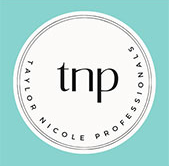Cost Effective Staffing: How to Balance Budget and Talent
Managing staffing costs while maintaining efficiency and quality is a challenge for many organizations. Cost effective staffing focuses on achieving the right balance between employee productivity, operational needs, and budget constraints. By implementing strategic hiring, scheduling, and workforce management practices in targeted service areas, businesses can reduce expenses while still meeting performance expectations.
Key Takeaways
- Assess staffing needs based on workload patterns and business goals.
- Leverage technology for scheduling and workforce optimization.
- Consider flexible staffing models to adapt to demand changes.
- Focus on employee retention to reduce turnover costs.
- Invest in training to enhance productivity and reduce errors.
- Regularly review staffing plans to ensure ongoing efficiency.
Understanding Cost Effective Staffing
Cost-effective staffing is a strategic approach to managing human resources that focuses on fulfilling operational requirements efficiently without incurring excessive labor expenses. As explained in our guide on what a staffing agency does, this principle does not advocate for indiscriminate job cuts or the elimination of vital roles. Instead, it emphasizes optimizing various aspects of staff management, including scheduling, training, and deployment.
The primary objective of cost-effective staffing is to strike a delicate balance between overstaffing and understaffing. Both extremes can have detrimental effects on an organization. Overstaffing leads to unnecessary salary expenditures, reduced individual productivity due to a lack of sufficient work, and potentially lower morale as employees feel underutilized. Conversely, understaffing can result in overworked employees, burnout, missed deadlines, decreased service quality, and ultimately, a loss of business opportunities and increased costs associated with inefficiency and emergency hiring.
Achieving cost-effective staffing involves several key strategies:
- Optimized Scheduling: Utilizing
advanced scheduling software and predictive analytics to forecast demand accurately and align staffing levels accordingly. This includes considering peak and off-peak hours, seasonal fluctuations, and specific project needs to avoid idle time or last-minute scramble.
- Cross-Training and Skill Versatility: Investing in training programs that equip employees with a diverse set of skills. Cross-trained staff can be redeployed to different departments or tasks as demand shifts, reducing the need to hire additional personnel for temporary needs.
- Effective Workforce Planning: Proactive analysis of future business needs and market trends to anticipate staffing requirements. This involves assessing current employee capabilities, identifying skill gaps, and planning for recruitment or internal development well in advance.
- Performance Management and Productivity Enhancement: Implementing systems that monitor and
improve employee productivity. This could involve setting clear performance metrics, providing regular feedback, and offering incentives for achieving goals.
- Leveraging Technology and Automation: Exploring automation for repetitive or low-value tasks, freeing up human resources for more complex and strategic work. This not only reduces labor costs but also enhances overall efficiency.
- Flexible Staffing Models: Considering alternative staffing models such as part-time employees, temporary workers, freelancers, or remote staff to scale operations up or down as needed, without the fixed costs associated with full-time employees. Businesses can benefit from targeted solutions like
administrative staffing services,
light industrial workforce support,
customer service recruitment solutions,
warehouse staffing options, and
direct hire recruitment.
- Retention Strategies: Reducing employee turnover through competitive compensation, positive work culture, professional development opportunities, and work-life balance initiatives. High turnover rates lead to significant recruitment and training costs, as discussed in our post on direct hire staffing benefits.
Strategies for Achieving Cost Effective Staffing
There are several ways to make staffing more cost effective without sacrificing quality:
- Implement workforce management software to track productivity and labor costs.
- Use part-time or seasonal staff during peak periods.
- Cross-train employees to handle multiple tasks.
- Outsource non-core tasks when it is more economical.
Some organizations find success with specialized recruitment, such as aerospace industry staffing solutions or expert customer service team placement, which can lower hiring costs while maintaining service quality.
The Role of Technology in Staffing
Technology plays a major role in optimizing staffing. Scheduling software can help managers forecast staffing needs based on past trends and seasonal demand. AI-driven tools can recommend ideal shift allocations, reduce overtime costs, and improve employee satisfaction by providing predictable schedules.
Balancing Cost and Employee Satisfaction
Prioritizing employee morale and satisfaction is crucial for long-term business success, despite the importance of cost control. Fair compensation, competitive salaries, and comprehensive benefits are foundational. Clear growth opportunities, including training, development, and career paths, boost motivation. A supportive work environment, characterized by open communication, work-life balance, recognition, and psychological safety, fosters collaboration and innovation. These efforts directly improve retention, reducing the significant costs associated with employee turnover (recruitment, hiring, training, and lost productivity). A happy workforce leads to a stable, cost-effective, and productive business.
Measuring Staffing Effectiveness
Measuring Staffing Effectiveness for Optimal Cost Control" highlights the vital link between strong staffing management and effective cost control. Without consistently assessing staffing effectiveness, cost control efforts will likely fail.
The article stresses the importance of regularly measuring staffing effectiveness for real-time insights into workforce efficiency and strategic alignment.
Key metrics for this measurement include:
- Labor Cost Percentage: Shows labor's proportion of total costs. High percentages can signal inefficiencies or overstaffing.
- Productivity Per Employee: Quantifies individual employee output. Declines can indicate issues like poor training or engagement, impacting cost-effectiveness.
- Turnover Rate: The rate at which employees leave. High turnover incurs significant costs from recruitment, onboarding, training, and lost knowledge.
- Absenteeism Rates: Frequent absences disrupt workflow and increase costs (e.g., overtime, temporary staff).
Tracking these metrics enables organizations to adjust strategies in real time, optimizing resource allocation and staffing levels for efficient utilization. Ultimately, continuous measurement of staffing effectiveness is crucial for achieving and sustaining optimal cost control.
Sample Cost Analysis Table
| Model | Avg. Monthly Cost | Overtime Hours | Employee Turnover |
|---|---|---|---|
| Traditional Full-Time Only | $120,000 | 150 | 12% |
| Mixed Full-Time/Part-Time | $105,000 | 90 | 10% |
| Flexible On-Demand Staffing | $98,000 | 50 | 8% |
Frequently Asked Questions
What is cost effective staffing?
It is a workforce management approach that balances staffing levels and costs to meet operational needs efficiently.
How can small businesses benefit from cost effective staffing?
Small businesses can save money, improve productivity, and reduce turnover by using flexible staffing strategies.
Is outsourcing part of cost effective staffing?
Yes, outsourcing certain tasks can be part of a cost effective staffing plan when it reduces expenses and frees internal resources.
How often should staffing plans be reviewed?
Describe the item or answer the question so that site visitors who are interested get more information. You can emphasize this text with bullets, italics or bold, and add links.Does cost effective staffing affect customer service?
If managed well, cost effective staffing should maintain or even improve customer service by ensuring the right people are in the right roles at the right times.
Final Thoughts
Cost effective staffing is not about cutting staff to the bare minimum, but about creating a strategic balance between costs and productivity. By using data-driven decisions, embracing flexible staffing solutions for employers, and investing in employee development, organizations can maintain quality while managing budgets effectively.
Whether you are an organization seeking skilled talent or an individual exploring career opportunities, the right staffing partner can make all the difference.
Contact us today to learn how Taylor Nicole can help you achieve your staffing goals efficiently and effectively.


